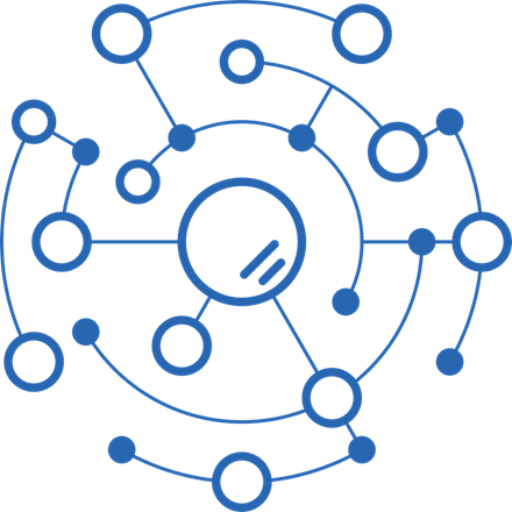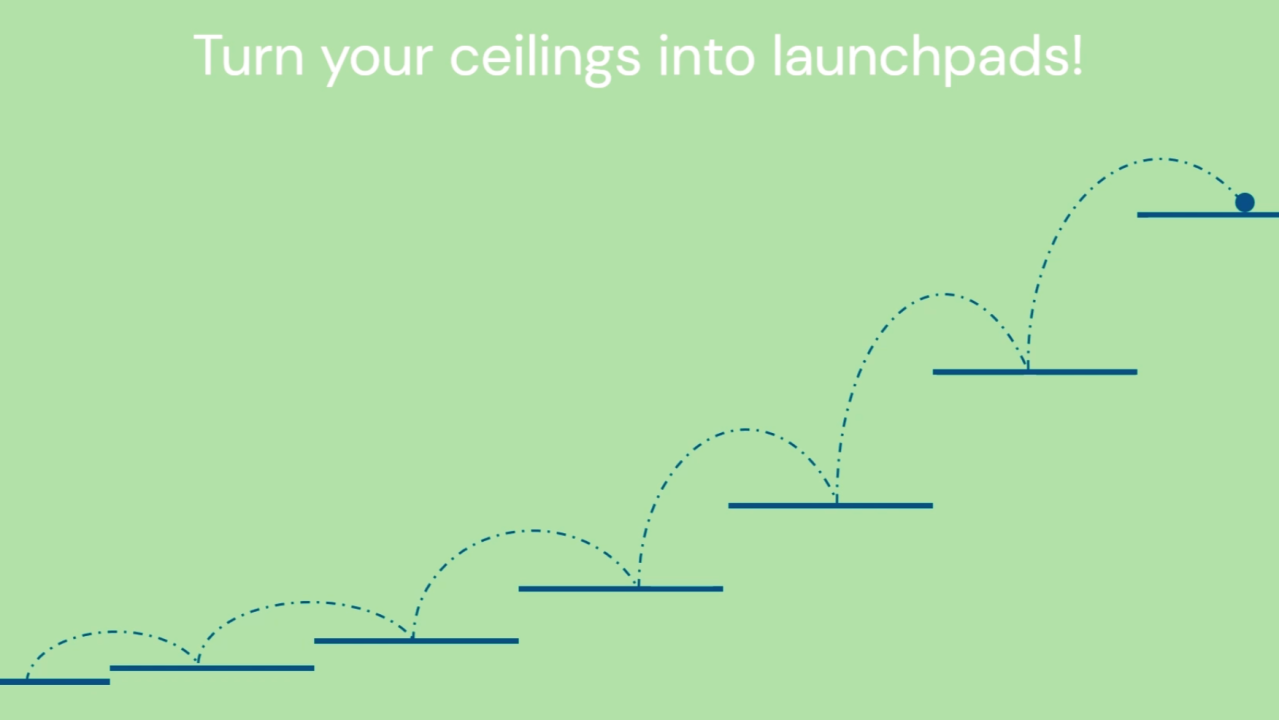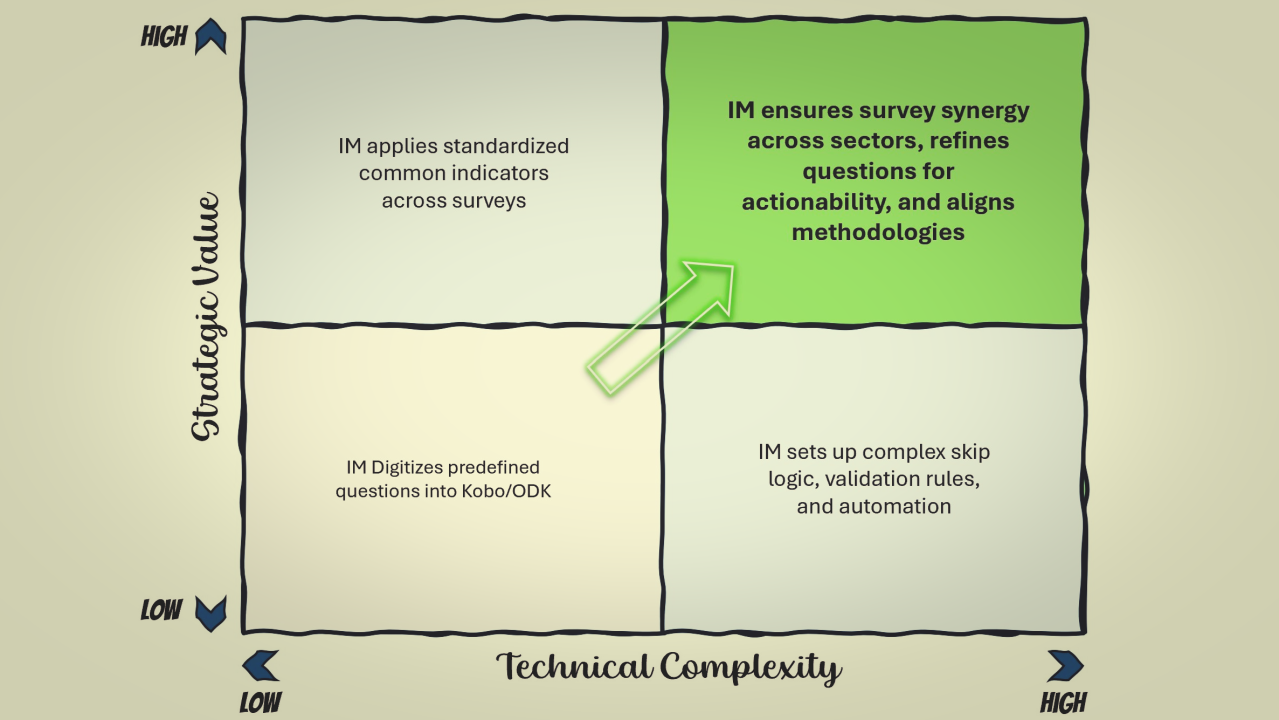In humanitarian operations, surveys and assessments play a crucial role in shaping decisions. They tell us who needs what, where, and when. But anyone who has worked with data collection knows that surveys don’t always go as planned.
Duplicate efforts. Outdated methodologies. Data that sits in reports instead of driving action. These challenges can feel like a ceiling – a hard stop that limits progress.
But what if, instead of ceilings, we saw them as launchpads?
From Barriers to Breakthroughs: A New Mindset for Surveys
Rather than seeing assessment challenges as unavoidable obstacles, what if we used them as opportunities to innovate, collaborate, and rethink how we collect and use data?
By applying The Ceiling-to-Launchpad Effect, we can turn limitations into advantages. Here’s how:
1. The Assessment Registry: From Data Silos to Collective Intelligence
The Ceiling: Different teams and organizations conduct surveys independently, often without knowing what data already exists. As a result, we see duplication of efforts and missed opportunities for collaboration.
The Launchpad: Imagine a centralized “Assessment Registry” – a simple but powerful tool that tracks all past, ongoing, and planned surveys. By maintaining a shared overview, teams can:
:.: Avoid redundant data collection – reducing survey fatigue for affected communities;
::. Leverage existing insights – saving time and resources by building on previous findings;
.:: Enhance coordination – bringing together teams who are working on similar issues.
Instead of reinventing the wheel each time, an Assessment Registry allows us to build on a foundation that already exists. It transforms the ceiling of “we don’t know what others are doing” into a launchpad for “let’s collaborate and make our data more impactful.”
2. Essential Indicators: From Missed Opportunities to Smarter Data Collection
The Ceiling: Every assessment is designed independently, often without considering how its findings can contribute to a broader understanding of humanitarian needs. Key questions are sometimes overlooked, leading to gaps in critical data.
The Launchpad: By embedding a core set of essential indicators into every relevant survey, we create a baseline for consistent and comparable data across assessments. This allows us to:
:.: Gather critical data across different surveys without overloading respondents;
::. Ensure key humanitarian indicators are always captured, enabling better trend analysis;
.:: Make every assessment count – even when designed for a specific purpose, it contributes to a bigger picture.
Think of it like adding universal questions that act as “data anchors.” Whether a survey is focused on protection, shelter, or food security, it still captures a set of crucial insights that help build a more holistic view of humanitarian needs.
Instead of seeing surveys as one-time exercises, we turn them into stepping stones for a more interconnected, data-driven response.
3. Partner Engagement: From Individual Efforts to a Shared Data Ecosystem
The Ceiling: Many humanitarian organizations work in partnership with local NGOs, yet data collection efforts often remain fragmented. Smaller partners might lack technical capacity, making it difficult to contribute to or benefit from large-scale assessments.
The Launchpad: By investing in capacity building and data sharing, we create a stronger, more integrated data ecosystem. This means:
:.: Training partners on standardized data collection methods to ensure consistency;
::. Encouraging data-sharing agreements that make insights accessible across organizations;
.:: Empowering local actors by integrating them into the assessment process rather than keeping data expertise centralized.
This shift transforms “only large agencies have access to quality data” into “every partner contributes to and benefits from a shared knowledge system.” By elevating our collective capacity, we multiply impact across the entire humanitarian response.
Conclusion: Elevating the Way We Work with Data
The challenges we face in humanitarian data collection are real, but they don’t have to be barriers. By applying The Ceiling-to-Launchpad Effect, we shift from seeing obstacles as endpoints to treating them as starting points for better solutions.
::: An Assessment Registry helps us work smarter, not harder;
::. Essential Indicators ensure our surveys contribute to a bigger picture;
.:: Stronger partnerships turn data collection into a collective effort.
By embracing this mindset, we transform survey challenges into opportunities for greater impact.




